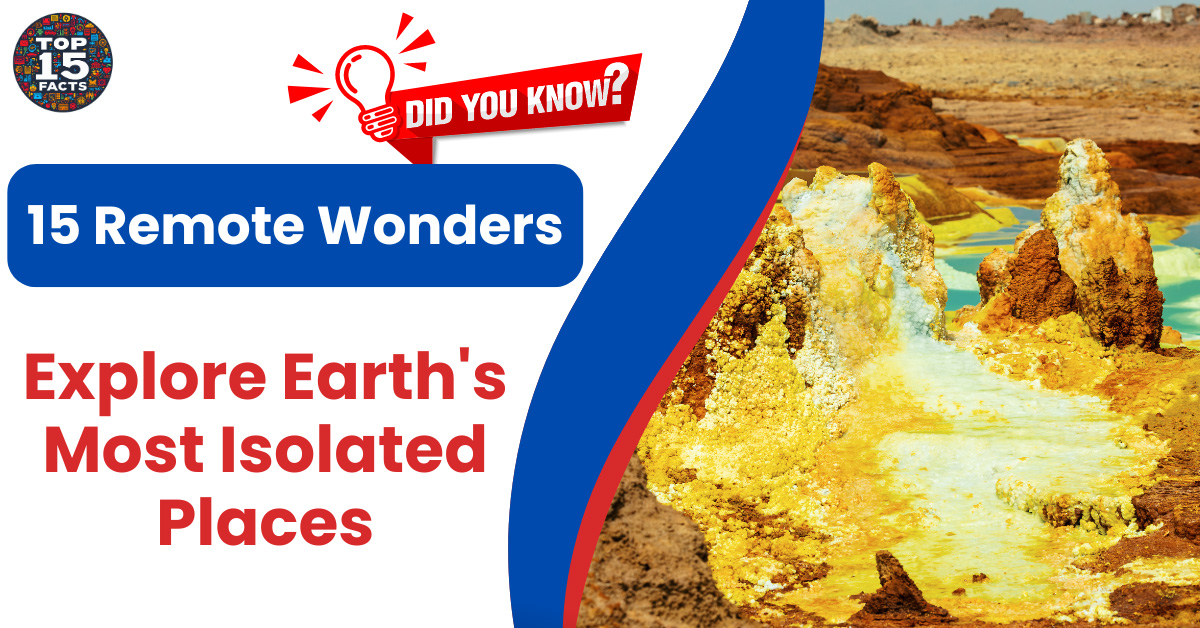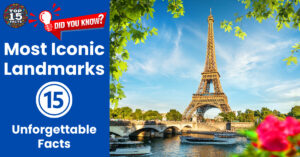Introduction
The world is filled with bustling metropolises and easily accessible destinations. But some locations remain shrouded in an aura of remoteness and intrigue. These isolated places on Earth possess a unique allure, drawing adventurers and those who seek to step off the beaten path. From windswept islands to desolate deserts, these remote regions conceal mysteries that have fascinated people for centuries. Let’s embark on a journey to uncover 15 of the most isolated places on Earth and the intriguing secrets they hold.
15 Isolated Places on Earth
- Tristan da Cunha, South Atlantic Ocean
- Kerguelen Islands, Indian Ocean
- Easter Island, Chile
- Pitcairn Islands, South Pacific Ocean
- Ittoqqortoormiit, Greenland
- Svalbard, Norway
- Socotra Island, Yemen
- Motuo County, China
- Oymyakon, Russia
- McMurdo Station, Antarctica
- La Rinconada, Peru
- Alert, Canada
- Foula, Scotland
- Danakil Depression, Ethiopia
- Cape York Peninsula, Australia
1. Tristan da Cunha, South Atlantic Ocean
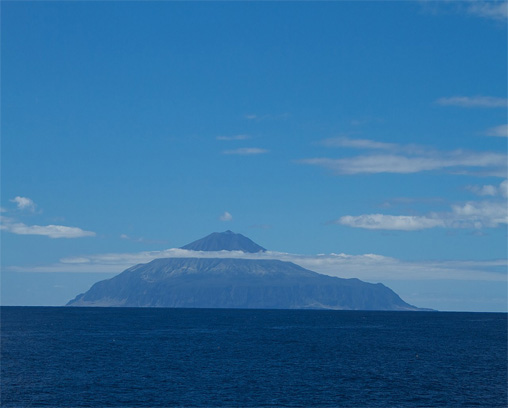
- Extreme Isolation: In the vastness of the South Atlantic Ocean lies Tristan da Cunha, an archipelago so remote it’s considered the most isolated inhabited place on Earth. The nearest landmass, South Africa, lies a staggering 1,750 miles away!
- Tiny Community: Tristan da Cunha boasts a population of just around 240 British citizens living in the main settlement, Edinburgh of the Seven Seas. With communal land ownership and restrictions on outsiders, the community is incredibly close-knit.
- Slow Travel: Forget airports! Reaching Tristan da Cunha means a six-day boat journey from South Africa. Supply ships arrive only a few times a year, making the islanders remarkably self-sufficient.
- Unique Way of Life: Life here revolves around subsistence farming, fishing, and some tourism to sustain its limited economy. Their isolation has nurtured a fascinating culture and a strong sense of community.
2. Kerguelen Islands, Indian Ocean
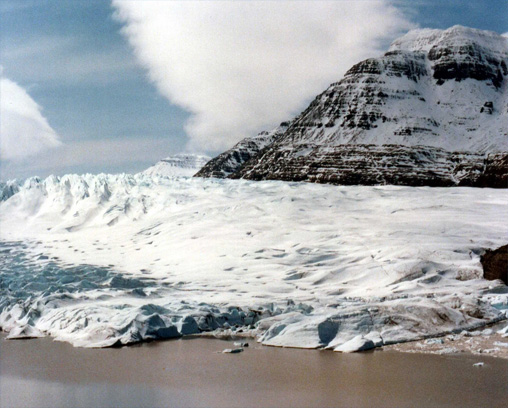
- Desolation: Nicknamed the “Desolation Islands,” the Kerguelen Islands lay in the heart of the Indian Ocean. Miles from any other land, they’re battered by relentless winds and offer a rugged, storm-swept landscape.
- Wildlife Sanctuary: Surprisingly, despite the harsh conditions, the Kerguelen Islands burst with life! Huge penguin colonies, elephant seals, unique bird species, and even a rare flightless duck thrive in this challenging environment.
- Scientific Exploration: This unique ecosystem has drawn scientists for years, seeking to understand how creatures adapt and survive in such extreme isolation. Clues found here help unravel the mysteries of evolution and resilience.
3. Easter Island, Chile
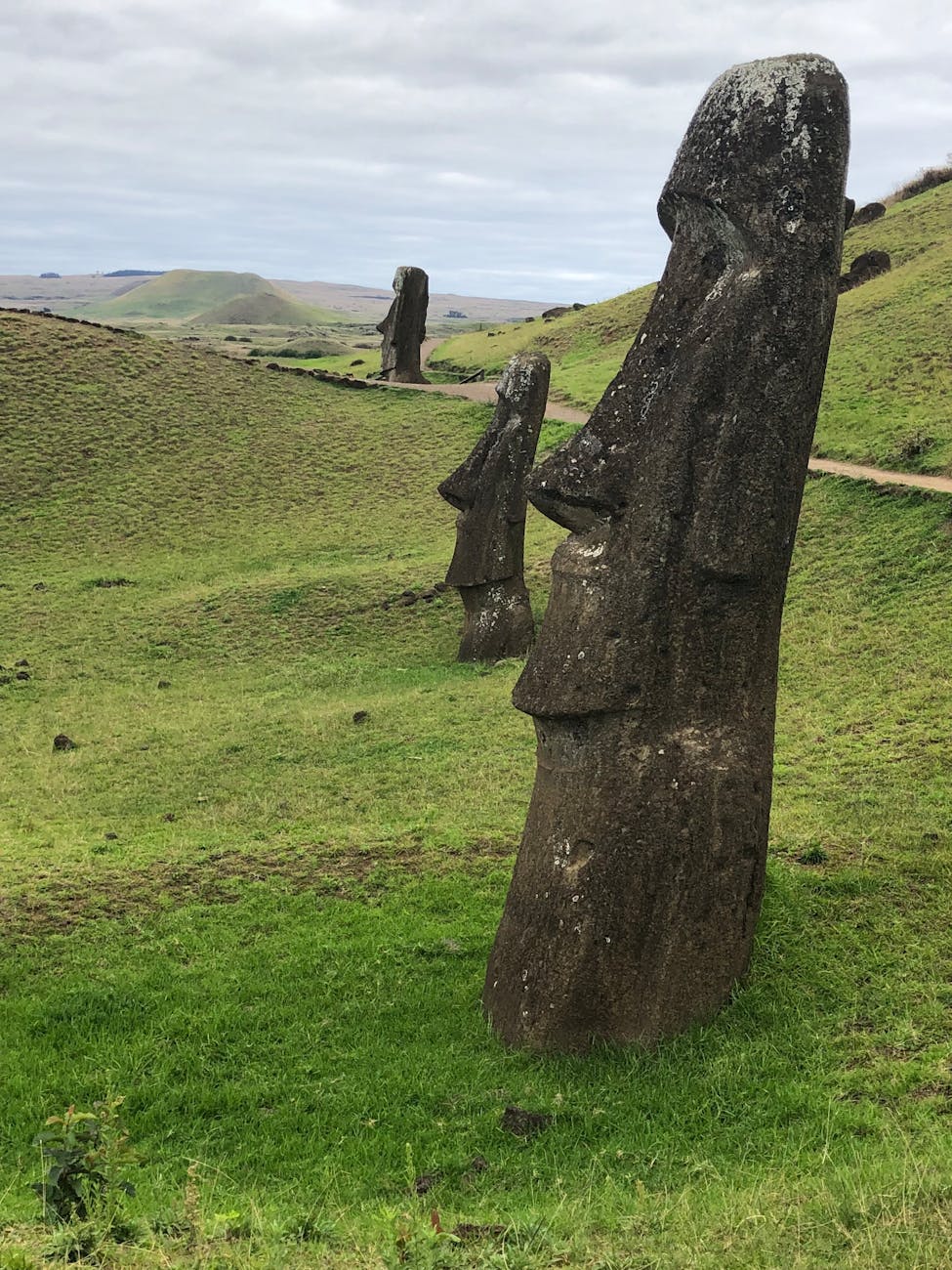
- Land of the Moai: Easter Island (Rapa Nui) is world-famous for its enigmatic statues, the Moai, scattered across its volcanic landscape. Its location in the remote southeastern Pacific Ocean only adds to its mystique.
- Echoes of the Past: Scientists and explorers have long puzzled over how early inhabitants reached this isolated island and created such impressive monuments. Was their civilization impacted by its remote location?
- Window Into History: Archaeology on Easter Island tells a story of a once-flourishing society. Studies of its ecosystem and the Moai themselves might help explain the changes this unique place has undergone.
Read More: 15 Unique Cultural Festivals You Won’t Want to Miss
4. Pitcairn Islands, South Pacific Ocean
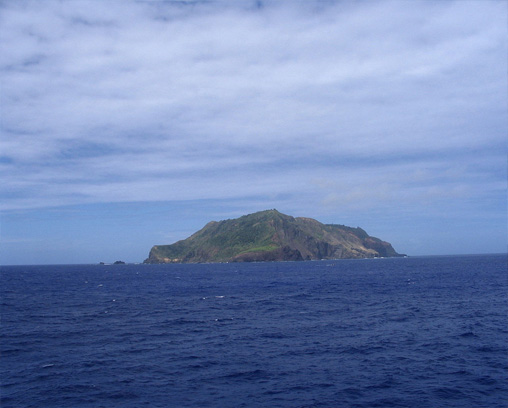
- Island of Mutineers: The tiny Pitcairn Islands, scattered across the vast South Pacific Ocean, are forever linked to the legendary mutiny on the HMS Bounty. It’s a captivating tale of survival and the formation of a unique society.
- Remote Refuge: Polynesian settlers lived on the islands long before Europeans arrived. But it was the Bounty mutineers and their companions who established a lasting community in this isolated corner of the world.
- Unique Blend: Today, many Pitcairn Islanders are descendants of the mutineers and Polynesians, creating a fascinating cultural heritage. Their remoteness has resulted in a tiny, close-knit community with its own distinct way of life.
5. Ittoqqortoormiit, Greenland
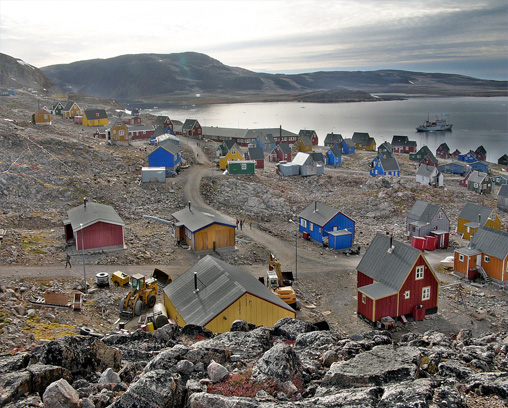
- Life on the Edge: Nestled within the world’s largest national park, Ittoqqortoormiit sits on Greenland’s remote eastern coast. Glaciers, fjords, and the icy Greenland Sea create a dramatic backdrop for this isolated community.
- Inuit Resilience: Traditional Inuit culture thrives in Ittoqqortoormiit. Residents rely on hunting, fishing, and some tourism to sustain themselves, showcasing the remarkable adaptability of humans in harsh environments.
- Remote and Resilient: Ittoqqortoormiit is one of Greenland’s most remote towns. Access is limited, making the community incredibly self-reliant and fostering the preservation of ancient traditions in this unforgiving, yet beautiful, landscape.
6. Svalbard, Norway
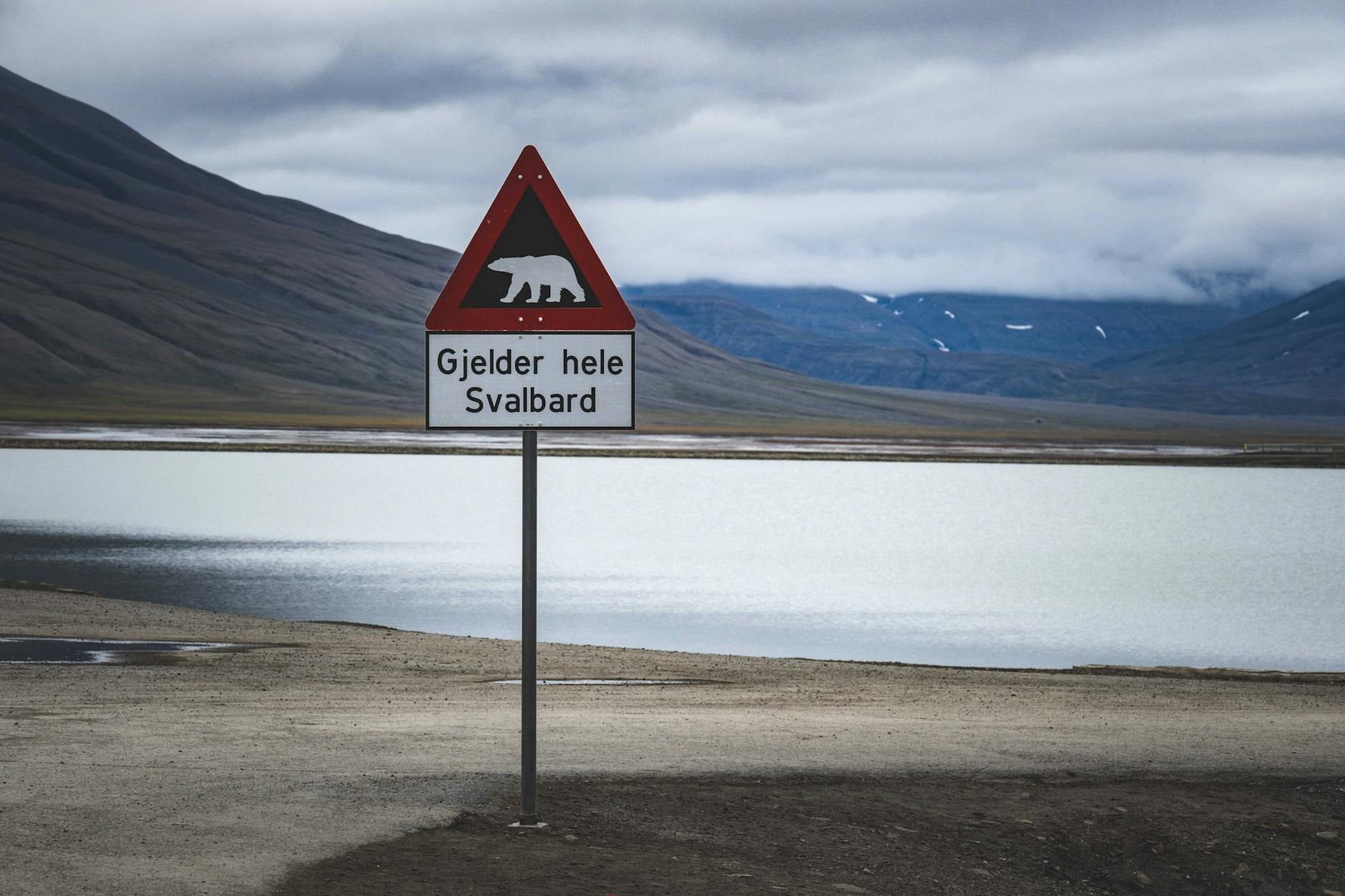
- Arctic Wilderness: In the far reaches of the Arctic Ocean lies Svalbard, a Norwegian archipelago. From icy fjords and glaciers to polar bears roaming the land, Svalbard embodies remote, untamed nature.
- Life in the North: While most of Svalbard is uninhabited, the town of Longyearbyen offers a glimpse into life in extreme northern conditions. This small community endures long, dark winters and the ever-present possibility of encountering Arctic wildlife.
- Scientific Outpost: Svalbard is important for scientists studying climate change, Arctic ecosystems, and unique geological phenomena. Its remote location and fragile environment make it a vital place for research and conservation efforts.
Read More: 15 Astonishing Natural Wonders You’ve Never Heard Of
7. Socotra Island, Yemen
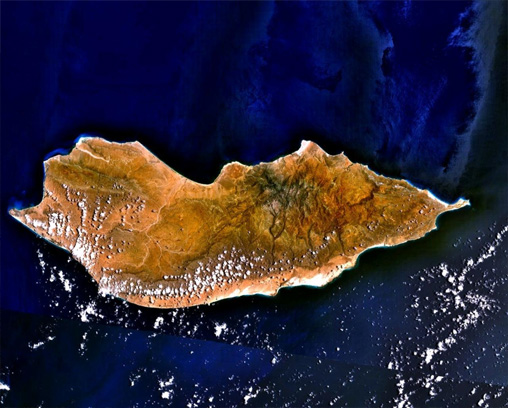
- Alien Landscapes: Socotra Island, separated from mainland Yemen, evokes images of another planet. Its most iconic feature, the Dragon’s Blood Tree, adds to the island’s unique and almost extraterrestrial appearance.
- Biological Treasure Trove: Socotra is a haven for unusual biodiversity. Hundreds of plant and animal species found here exist nowhere else on Earth, having adapted in strange and wonderful ways to the island’s isolation.
- Ancient Isolation: Socotra’s remoteness has protected its unique ecosystem. The island has a rich history and culture shaped by its distance from the rest of the world, adding another layer of fascination to its otherworldly aura.
8. Motuo County, China
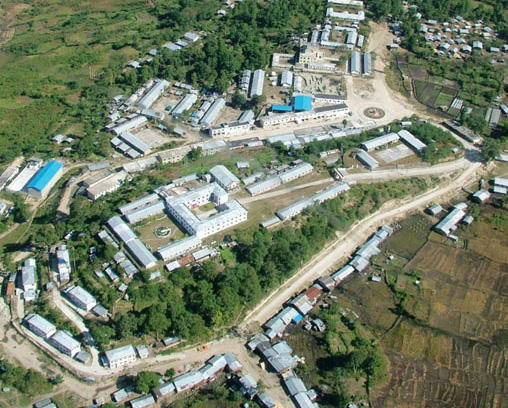
- Hidden Region: Deep within Tibet lies Motuo County, an isolated region of breathtaking natural beauty. For centuries, its rugged terrain and lack of roads kept it largely inaccessible and shrouded in mystery.
- The Last Untouched: Motuo is sometimes called the “last pure land” due to its preserved ecosystems and diverse wildlife. Recent road construction has increased access but also highlights its delicate balance between isolation and modernization.
- Cultural Heritage: Motuo is home to several minority ethnic groups and its unique cultural traditions reflect a way of life shaped by its remote location and the surrounding Himalayan landscape.
9. Oymyakon, Russia
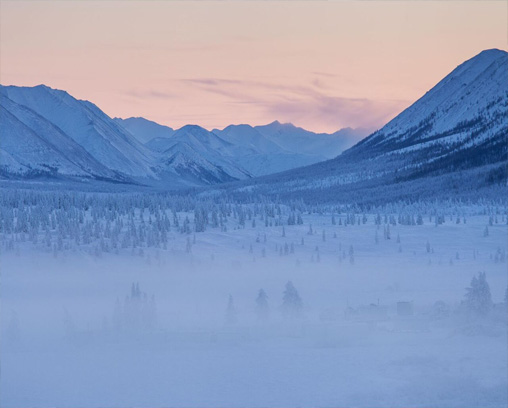
- Coldest of the Cold: Oymyakon, tucked away in Siberia, holds the chilling title of the coldest permanently inhabited place on Earth. Residents routinely endure temperatures far below freezing, with records reaching an almost unbelievable -71.2°C (-96°F)!
- Adapting to Extremes: Life in Oymyakon is a testament to human resilience. Houses are built on special foundations, cars run continuously to prevent freezing, and bundling up is a way of life. It’s a place where survival in extreme cold is an everyday necessity.
- Arctic Allure: Despite the challenges, Oymyakon holds a certain fascination for those who seek unique experiences. Its reputation as a place of bone-chilling cold attracts intrepid travelers and serves as a reminder of the limits of human endurance.
10. McMurdo Station, Antarctica
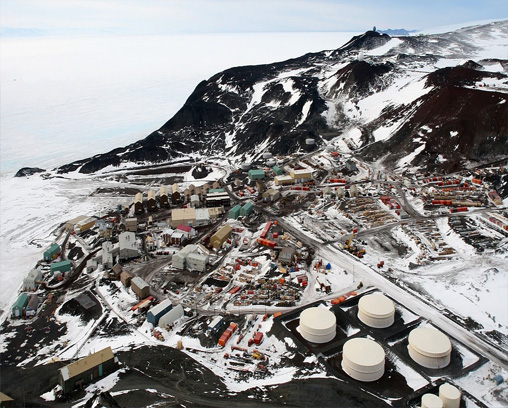
- Outpost in Ice: On the frozen Ross Ice Shelf lies McMurdo Station, the largest research community in Antarctica. This bustling hub of scientific activity stands as a testament to human exploration in the most inhospitable environment on Earth.
- Supporting Science: McMurdo Station is a vital support system for a wide range of research. Scientists and support staff brave the Antarctic chill to study climate change, unique ecosystems, geology, and even astronomy from this remote corner of the world.
- Life at the Bottom of the World: Living at McMurdo requires adaptation. The station is a functioning society on ice, with extreme weather, limited resources, and a close-knit community sharing a spirit of adventure.
Read More: 15 Cities That Dazzle After Dark: A World Tour of Nighttime Wonders
11. La Rinconada, Peru
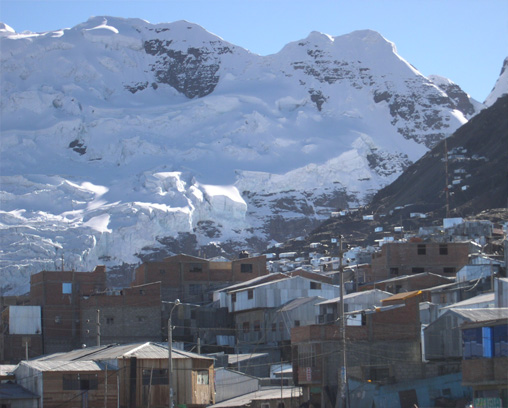
- Sky-High City: Perched at a breathtaking 5,100 meters (16,700 feet) in the Peruvian Andes, La Rinconada is known as the highest permanent settlement on Earth. Residents endure thin air, frigid temperatures, and harsh conditions in this extraordinary location.
- Gold Rush Town: Life in La Rinconada centers around the nearby gold mine. Informal mining draws thousands seeking fortune, creating a unique, often chaotic community driven by economic opportunity.
- Challenges of Altitude: Life at this extreme altitude poses significant health and social challenges. Basic amenities are limited, and the unforgiving environment creates ongoing hardship for those who call La Rinconada home.
12. Alert, Canada
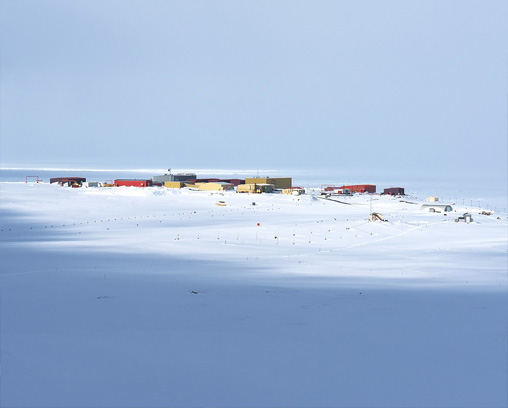
Image Source: wikipedia By Kevin Rawlings
- Top of the World: Alert, on Ellesmere Island in Nunavut, is the northernmost permanently inhabited place on Earth. This remote outpost serves primarily as a military and meteorological station, operating even during the long polar night.
- Harsh and Barren: Life in Alert means enduring months of darkness, extreme cold, and a desolate, icy landscape. Only a rotating population of dedicated personnel withstand the demands of this unforgiving Arctic environment.
- Strategic Outpost: Alert’s remote location has strategic importance. Its role in monitoring the Arctic environment and providing a military presence highlights its unique function in an isolated yet geopolitically significant region.
13. Foula, Scotland
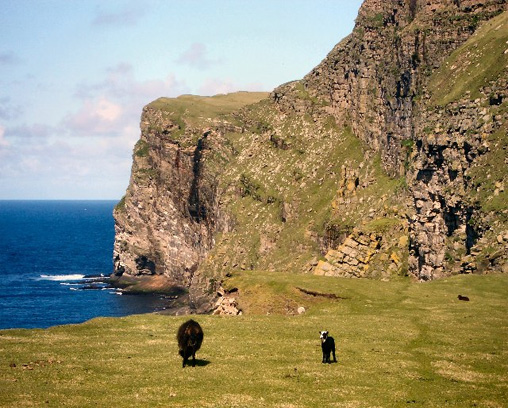
- Remote Isle: As part of the Shetland archipelago, Foula lies off the northern coast of Scotland. Its dramatic cliffs, wild seascapes, and windswept terrain create a sense of rugged remoteness.
- Small but Mighty: Foula boasts a tiny but resilient community. Life here is shaped by traditional practices like crofting (small-scale farming), a strong sense of independence, and deep connections to the natural rhythms of the island.
- Birdwatcher’s Paradise: Foula is renowned for its diverse bird populations. Huge seabird colonies thrive on its sheer cliffs, attracting wildlife enthusiasts and scientists from around the world.
14. Danakil Depression, Ethiopia
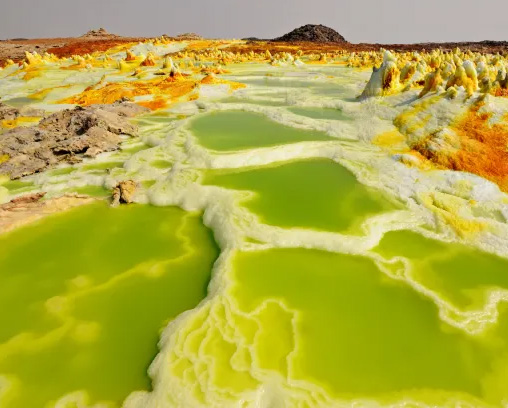
- Unforgiving Landscape: The Danakil Depression is one of the hottest, driest, and most geologically active places on Earth. Its salt flats, lava lakes, and acidic springs create an almost alien, yet hauntingly beautiful environment.
- Life at the Extremes: Despite the harsh conditions, the Afar people have adapted to this seemingly inhospitable land, finding ways to thrive through nomadic pastoralism and salt mining.
- Adventure and Awe: The Danakil Depression draws intrepid explorers and scientists. It’s a place where the extremes of nature are on full display, offering breathtaking beauty alongside constant reminders of our planet’s raw power.
15. Cape York Peninsula, Australia
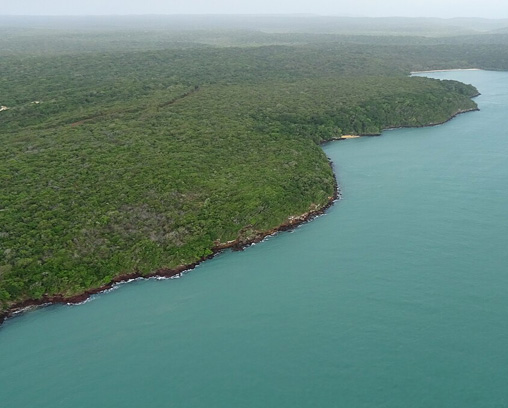
Image Source: wikipedia By Ian Cochrane
- Vast and Wild: Australia’s Cape York Peninsula is a vast wilderness at the far north of the continent. Rainforests, winding rivers, and Aboriginal communities with deep cultural connections to the land define this remote region.
- Untamed Beauty: Cape York harbors a rich biodiversity and spectacular natural landscapes. Its isolation has protected unique ecosystems relatively untouched by widespread development.
- Cultural Significance: The traditional owners of the land maintain strong ties to its heritage and customs. Rock art sites and cultural practices tell stories of this ancient connection, offering a glimpse into a way of life intrinsically linked to the land.
Conclusion
The Earth’s most isolated places possess a power unlike any other. From the challenges of survival to the awe-inspiring beauty, and from scientific discoveries to enduring cultural traditions, these remote regions hold a mirror to our own adaptability and curiosity. They remind us of the vastness of the world, the resilience of life and the importance of preserving unique corners of our planet. Whether experienced firsthand or through exploration from afar, these isolated wonders leave a lasting impression and ignite a sense of wonder about all that remains unseen.
15 FAQs (Frequently Asked Questions):
-
What makes a place truly isolated?
True isolation is a combination of several factors. This includes:
Physical distance: Significant distance from major cities, continents, or other inhabited areas.
Difficulty of access: Lack of easy transportation options, like airports or well-maintained roads.
Challenging environment: Extreme climates, harsh terrain, or limited natural resources that make survival difficult.
Self-sufficiency: Limited dependence on external support or supplies. -
Are these isolated places permanently inhabited?
Some are, like Tristan da Cunha or Ittoqqortoormiit, showcasing remarkable human adaptation. Others, like the Kerguelen Islands or Svalbard, have mainly rotating populations of scientists and support staff. A few, like the Danakil Depression, host nomadic peoples who’ve thrived in harsh conditions for generations.
-
Why are scientists so interested in isolated places?
Isolated locations offer several key areas of scientific interest:
Evolution: Unique, island ecosystems like the Galapagos, reveal how species adapt.
Climate Change: Remote regions like Svalbard are prime locations for monitoring the impact.
Extreme Adaptations: Places like the Danakil Depression harbor organisms that can exist where others can’t, potentially informing medicine or technology.
Cultural Preservation: Studying traditional societies in isolated areas can help understand human history and societal development. -
Can I visit these isolated places?
Some are accessible to tourists, although travel often requires effort and flexibility. Places like Tristan da Cunha or Easter Island offer limited tourism opportunities. Others, like McMurdo Station or Alert, are primarily research or military focused and not open to the general public. Always research extensively and be mindful of the fragile nature of these places if you choose to visit.
-
How can I learn more about isolated places?
Many resources exist! Seek out:
Documentaries and travel shows: These offer stunning visuals and often dive into the unique aspects of these places.
Scientific Journals & Reports: Explore research papers from scientists studying isolated environments.
Historical Accounts: Reading about early explorers or traditional societies provides enriching insights. -
What are the biggest challenges faced by people living in isolated places?
Limited Resources: Access to healthcare, education, and diverse food sources can be difficult.
Weather and Environment: Extreme climates and natural hazards pose a constant threat.
Economic Hardship: Small populations may lead to limited work opportunities.
Social Isolation: Loneliness and a feeling of disconnection from the wider world can occur. -
How do isolated communities stay connected to the rest of the world?
Technology: Satellite phones and internet (where available) are lifelines, even if unreliable.
Supply Ships: Communities depend on regular deliveries for essentials, news, and connection.
Visitors: Researchers, tourists, and government representatives bring occasional outside interaction.
Cultural traditions: Preserving stories and customs helps maintain a sense of identity and history. -
Are there any ethical considerations when visiting isolated places?
Absolutely! Ethical tourism in isolated regions is crucial. Things to keep in mind:
Respecting local customs: Learn about the culture and traditions before you go.
Minimizing environmental impact: Follow Leave No Trace principles and be mindful of consumption.
Supporting the local economy: Choose locally run businesses and guides when possible.
Avoiding exploitation: Be wary of experiences that might commodify local people or their culture. -
What can we learn from the way of life in isolated places?
Resilience: Communities in isolated places often showcase remarkable adaptability and problem-solving.
Resourcefulness: They demonstrate how to live with limited resources and make the most of what they have.
Importance of Community: Close bonds are vital in remote places, highlighting the need for cooperation.
Appreciation of Nature: Those in isolated areas have a unique connection to the natural world and environmental cycles. -
Are there efforts to protect these isolated places?
Yes! Some isolated locations are designated as:
National Parks and Protected Areas This limits development and preserves natural habitats.
UNESCO World Heritage Sites Recognizes their cultural and natural significance.
Scientific Research Zones: Restricted access helps conserve unique and delicate environments. -
Do isolated people speak unique languages or dialects?
Absolutely! In places with longstanding separation from other populations, distinct languages or dialects often thrive. Some examples include:
Tristan da Cunha English: A blend of British regional dialects and historical influences.
Pitcairnese: A creole language with English and Polynesian (Tahitian) roots.
Greenlandic Inuktitut: A unique Inuit language and dialect spoken by communities like those in Ittoqqortoormiit. -
Are there any surprising discoveries that have been made in isolated places?
Throughout history, isolated locations have sparked countless discoveries:
Evolutionary Insights: The Galapagos Islands famously informed Darwin’s theory of evolution based on unique species found nowhere else.
Medical Discoveries: Microorganisms in extreme environments like the Danakil Depression could lead to new medications or biotechnology.
Archaeological Treasures: Remote places like Easter Island reveal clues about the rise and fall of past civilizations.
Astronomical Observations: Places with little light pollution, like the Atacama Desert (home to major telescopes), offer exceptional views of the cosmos. -
Can isolation be a positive thing?
While isolation brings challenges, it can also have benefits:
Preservation of Culture: Limited outside influence allows unique cultures and traditions to flourish.
Biodiversity Conservation: Isolation can protect ecosystems from invasive species and harmful human activity.
Psychological Benefits: Some people find peace and a sense of freedom in the remoteness.
Scientific Opportunity: Uninterrupted environments are ideal laboratories for research on various phenomena. -
Are there any famous people who have sought out isolated places?
Yes! Some notable figures have been drawn to the allure of remoteness:
Explorers and Adventurers: From early navigators to modern-day adventurers drawn to challenging, uncharted territories.
Artists and Writers: Seeking inspiration, solitude, and a different perspective from the hustle of cities.
Scientists: Drawn to pristine environments for research and discovery beyond the boundaries of the developed world.
Spiritual Seekers: Some find peace and connection through retreats in remote locations. -
Could we ever recreate the conditions of isolated places elsewhere?
To an extent, yes! Projects like Biosphere 2 attempted to establish closed, self-sufficient environments. These efforts can help researchers understand:
Resource Management and Long-Term Sustainability: Useful for both Earth and possible future space missions.
Ecosystem Dynamics: How even small, sealed environments respond to change.
Psychological Impacts of Isolation: How limited space and interaction affect humans over time.

